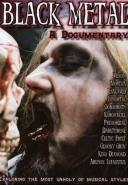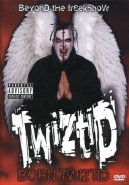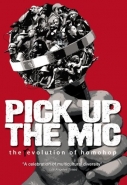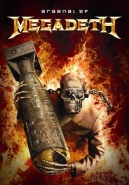 Sign up
Sign up to add this to your collection
|
 Sign up
Sign up to add this to your favorites
|
|
 80%
80%
Overall Rating
|
|
Ranked #4,282
...out of 20,869 movies
|
 Sign up to check in!
Sign up to check in!
|
Sam Dunn is a 30-year old anthropologist who wrote his graduate thesis on the plight of Guatemalan refugees. Recently he has decided to study the plight of a different culture, one he has been a part of since he was a 12-year old: the culture of heavy metal. Sam sets out on a global journey to find out why this music has been consistently stereotyped, dismissed and condemned and yet is loved so passionately by its millions of fans. Along the way, Sam explores metals' obsession with some of life's most provocative subjects - sexuality, religion, violence and death - and discovers some things about the culture that even he can't defend. Shot on location in the UK, Germany, Norway, Canada and the US, this documentary is the first of its kind. It is both a defense of a long-misunderstood art form and a window for the outsider into the spectacle that is heavy metal.
--IMDb
|
|
Sam Dunn, a thirty-year old anthropologist, takes the viewer on a trip through the culture of heavy metal music on this DVD released by Warner Home Video on May 23, 2006. Mr. Dunn explores this much maligned and misunderstood musical genre and culture not only as an anthropologist but as a fan. He has been a metal fan since he was twelve years old in British Columbia, Canada.
The DVD begins by exploring the origins of the genre and attempts to answer the question: "Who was the first heavy metal band?" Geddy Lee of Rush gives a nod to Blue Cheer, a little known, barely remembered trio from the late sixties as being the loudest, rudest, most metallic sounding band of the time. Lemmy from Motorhead casts a vote for Deep Purple. John Kay, formerly of Steppenwolf, talks about the origins of the term from the song, "Born to be Wild" referencing the thrill of riding a motorcycle. Alice Cooper claims that Rolling Stone magazine first used the term in reference to his band.
Mr. Dunn's conclusion, along with others like Rob Zombie and Lamb of God is that Black Sabbath was the first heavy metal band. There is an interview with Tony Iommi of Black Sabbath in which he talks about the "accidental" development of their unique sound.
The twin influences of classical music and blues are then discussed by Bob Ezrin, a record producer and Robert Walser, a musicologist from UCLA.
The particular sound of heavy metal is discussed in interviews with Deena Weinstein, a sociologist from DePaul University, who has written extensively about the genre. Bob Ezrin and Alex Webster from Cannibal Corpse talk about the use of the tritone or diminished fifth in heavy metal which gives it its unique, menacing sound. It was called "diabolus in musica" ("the Devil's interval") by some from early musical periods such as the baroque period.
There is an interview on the stage of the Hammersmith Odeon with Bruce Dickinson, vocalist for the NWOBHM (New Wave of British Heavy Metal) band, Iron Maiden. His operatic style of singing is recognized as one of the leading influences on other metal vocalists. He talks about his goal of "shrinking" the venue when the band plays in order to grab the attention of the guy in the last row at the back of the hall.
A segment filmed at the Wacken Open Air Festival which is an annual metal festival held in Wacken, Germany features an interview with a couple of inebriated members of the black metal band, Mayhem and an interview with Ronnie James Dio, frontman for the hugely popular band, Dio. Ronnie talks about the origins of the universal symbol for metal around the world, the "devil's horns," as well as the culture of metal being more like a family than anything else with its "us against the world" mentality. Mr. Dunn recognizes that just like any other culture, heavy metal provides its fans with a sense of belonging.
In 1984 the U.S. Senate held hearings with the PMRC (Parent's Music Resource Center) about objectionable, violent, and offensive lyrics in popular music. Several heavy metal bands made the PMRC's "Filthy Fifteen" list. Dee Snider from Twisted Sister testified at these hearings. Footage from these hearings is interspersed with Snider's recollections.
The preponderance of male fans and the exaggerated, hyper-masculine image projected by some of the bands is discussed by Ms. Weinstein and Mr. Walser. The rise of the "glam-metal" scene is covered in interviews with Vince Neil from Motley Crue and the photographer who shot Poison's album covers. This was the least interesting part of the DVD since I have never considered either of these to really be metal bands. Sure, they had metal influences but to these ears it was just revved up pop music.
Similarly, I did not find the interview with "legendary" groupie Pamela Des Barres all that fascinating, either. On the other hand, I greatly enjoyed the segment about the changing role of women in the scene. Interviews with the pioneering band Girlschool tell of the attitudes they had to overcome. Doro Pesch talks about the efforts of her label to get her to soften her image and her unwillingness to do so. Some good footage of Angela Gossow from Arch Enemy shows that women are mastering the extreme guttural vocals of some forms of metal.
As a Christian who sometimes has to explain his enthusiasm for hardcore and metal to skeptical fellow believers, I found the section on religion and Satanism provocative. Ronnie James Dio talks about the influence his Catholic upbringing has had on the incorporation of religious imagery in his music. Tony Iommi of Black Sabbath talks about how the image of the cross became such a large part of the band's image.
Alice Cooper makes the comment that "the Satanism imagery in heavy metal is a caricature. If you're looking for Satanism, don't look at rock 'n' roll. That's just a bunch of kids playing loud guitars, that's Halloween." Tom Araya from Slayer also talks about the influence of his Catholic upbringing on the extreme thrash metal that his band plays. I found it rather telling when discussing the title of the Slayer album God Hates Us All that Araya stated, "God doesn't hate us all, but it's a great fucking title for an album."
The purported role of heavy metal in some teen suicides is explored, noting the lawsuits that bands like Judas Priest, Black Sabbath, and Slipknot have faced. To date, no band has been found culpable of any wrongful death by suicide because of the lyrics of their songs.
Probably the most fascinating section of the DVD is on the Norwegian Black Metal scene. In the early 1990s, there was a rash of church burnings in Norway committed by some members of the black metal scene. Jorn Tunsberg, who spent time in prison for his part in a church burning, is unrepentant and defiant to this day, claiming that the act was a statement designed to destroy Christianity. Grutle Kjellson of Enslaved talks about Christianity getting what it deserves and that it had been forced upon the Norwegian people. Mr. Dunn notes that these actions speak less about metal's theatrics than they do about Norwegian sensibilities.
After a brief exploration of the death metal of Cannibal Corpse, Mr. Dunn closes by providing a possible answer to why metal is stereotyped and maligned. It could be that heavy metal culture and music confront what we would rather ignore, celebrate what we would rather deny, and indulge in what we fear most. That could be. As for me, I just like getting hot and sweaty in a club and slamming into other like-minded brothers and sisters in the pit.
I watched this film quite a few times, often with my 18- and 15-year-old sons. We all enjoyed it a great deal. It is informative, entertaining, and accurate. I would recommend it to anyone, including parents, who wants to get a better idea of what metal music and culture are really like.
9/10.
|
|


















